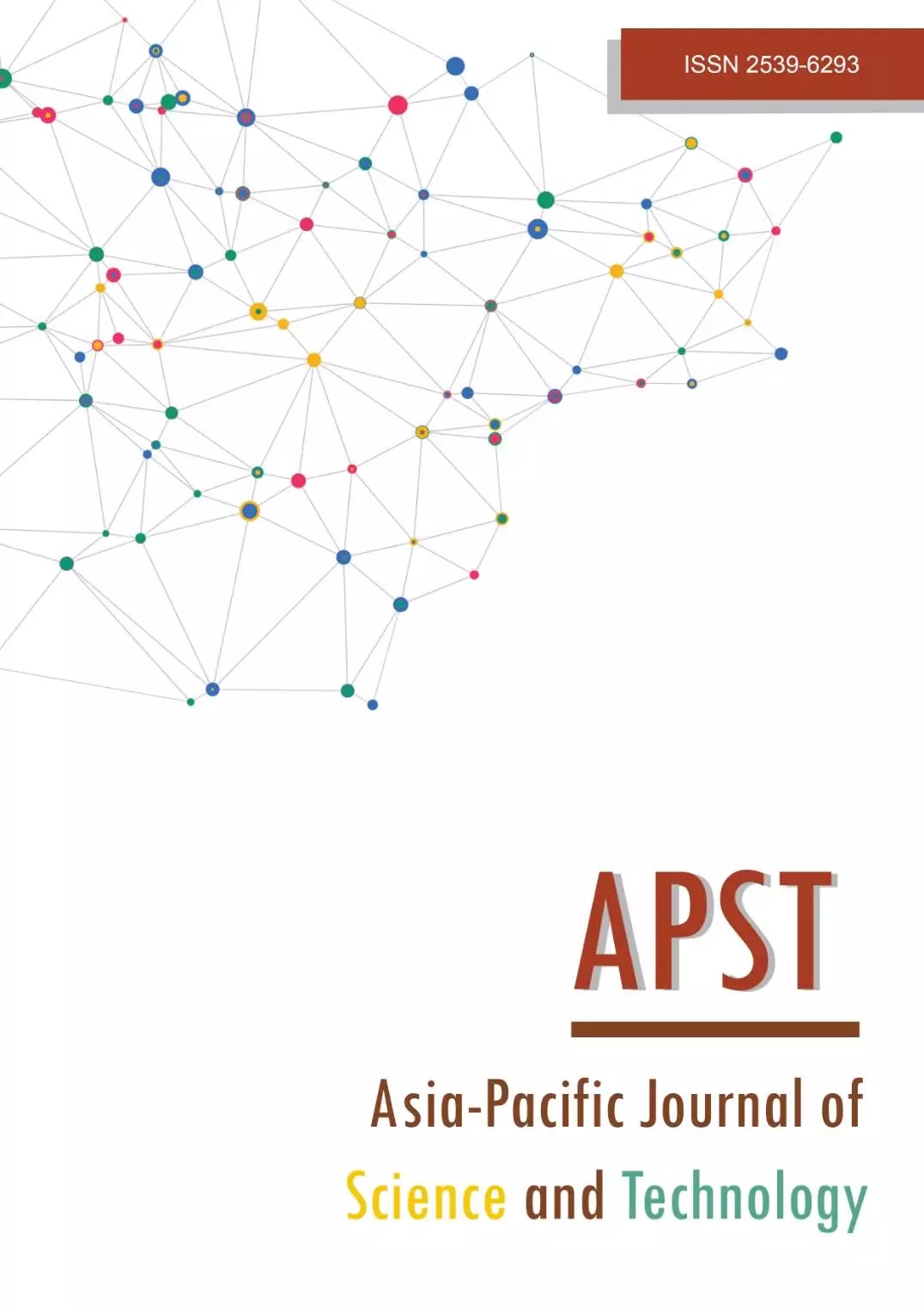Performance of SWAT hydrological model of partially-gauged Nambul River urbanized catchment in Manipur IHR, India
Main Article Content
Abstract
Hydrological modelling of partially-gauged and ungauged catchments is vital for the better development of land and water management policies. The Nambul river catchment in Manipur, is partially gauged, so observed data is scarce. The objective of the study is to calibrate and validate the Soil and Water Assessment Tool (SWAT) model using remotely sensed surface soil moisture along with available streamflow data to improve the model's performance in simulating the hydrological functions as surface runoff, sediment yield, evapotranspiration, etc for a partially-gauged urbanized river catchment which is under stress. Using the Sequential Uncertainty Fitting, version 2 (SUFI-2) program built-in to SWAT-CUP, SWAT model was calibrated and validated on a monthly basis. Streamflow calibration is carried out with available measured data for the years 2000-2002 and validation for the year 2003. The soil moisture calibration period (2001-2011) and validation period (2012-2020) are also carried out sequentially. SWAT model calibration and validation using streamflow and surface soil moisture (ECMWF) showed good model performance with NSE of 0.65, 0.69, and 0.67, 0.71, and R2 of 0.71, 0.74, and 0.70, 0.71, respectively. This study shows that remotely sensed satellite data can be used as one of the parameters and as an alternative to observed data for calibration and validation of the SWAT model of the Nambul river catchment. Further study, assessment, and management of the catchment can be aided by the study's contribution to hydrological modeling of ungauged or partially-gauged catchments where there is a scarcity of lack of routine observed hydrologic data.
Article Details

This work is licensed under a Creative Commons Attribution-NonCommercial-NoDerivatives 4.0 International License.
References
Abbaspour KC, Yang J, Maxinov I, Siber R, Bogner K, Meileitner J, et al. Modeling hydrology and water quality in the pre-alpine/alpine thur watershed using SWAT. J Hydrol. 2007;333:413-430.
Abbaspour KC, Rouholahnejad E, Vaghefi S, Srinivasan R, Yang H, Klove B. A continental-scale hydrology and water quality model for Europe: calibration and uncertainty of a high-resolution large-scale SWAT model. J Hydrol. 2015;524:733-752.
Aditya PN, Cassandra PC, Tarendra YL, Milind LW, Munoz J. Satellite soil moisture validation using hydrological swat model: a case study of Puerto Rico, USA. Hydrol. 2017;4(4):45.
Rajib MA, Merwade V, Yu Z. Multi-objective calibration of a hydrologic model using spatially distributed
remotely sensed/in-situ soil moisture. J Hydrol. 2016;536:192-207.
Musyoka FK, Strauss P, Zhao G, Srinivasan R, Klik A. Multi-step calibration approach for SWAT model using soil moisture and crop yields in a small agricultural catchment. Water. 2021;13:2238.
Neitsch SL, Arnold JG, Kiniry JR, Williams JR. Soil and water assessment tool soil and water assessment tool theoretical documentation. Taxas,USA: Texas A&M University System; 2009.
Arnold JG, Srinivasan R, Muttiah RS, Williams JR. Large area hydrologic modeling and assessment part i: model development. J Am Water Resour Assoc. 1998;34(1):73-89.
Merwade V, Rajib A. Setting up a SWAT model with ArcSWAT. West Lafayette: Lyles School of Civil Engineering, Purdue University; 2014.
Gaur S, Bandyopadhyay A, Singh R. Modeling potential impact of climate change and uncertainty on streamflow projections: a case study. J Water Clim Chang. 2021;12(2):384-400.
Romeji NS. Fluvial regime of the manipur river basin with study of backflow [dissertation]. Uttarakhand, Roorkee: Indian Institute of Technology Roorkee; 2006.
Trisal CL, Manihar Th. The atlas of loktak lake. New Delhi, India: Wetlands International-South Asia Program and Loktak Development Authority; 2004.
Beven K.J, Kirkby MJ. A physically based variable contributing area model of basin hydrology. Hydrol Sci Bull. 1979;24:43-69.
Jeffrey KM, Romeji Ng, Rathnam EV, Barman D, Raju PLN, editors. Hydrologic modeling of umiam watershed using GIS and SWAT model ISRS–ISG. National Symposium on ‘Recent Advances in Remote Sensing & GIS with Special Emphasis on Mountain Ecosystems. 2016 Dec 7-9; Dehradun, Uttarakhand, India. Dehradun: Indian Society of Remote Sensing; 2016.
Kuhn C. Modeling rainfall-runoff using SWAT in a small urban wetland [dissertation]. New Haven, Connecticut: Yale University; 2014.
Stehr A, Debels P, Romero F, Alcayaga H. Hydrological modeling with SWAT under conditions of limited data availability: evaluation of results from a chilean case study. Hydrol Sci J. 2008;53(3):588-601.
Singh CR, Thompson JR, Kingston D. Modelling water-level options for ecosystem services and assessment of climate change: Loktak Lake, northeast India. Hydrol Sci J. 2011; 56(8):1518-1542.
Anand V, Bakimchandra O. Future climate change impact on hydrological regime of river basin using SWAT model. Glob J Environ Sci Manag. 2009;5(4):471-484.
Abbaspour KC, Vaghefi S, Srinivasan R. A guideline for successful calibration and uncertainty analysis for soil and water assessment: A review of papers from the 2016 international SWAT conference. Water. 2016;10(1):6.
Abbaspour KC. SWAT-CUP: SWAT calibration and uncertainty programs, User Manual. Dübendorf, ZH, Switzerland: Eawag Swiss Federal Institute of Aquatic Science and Technology; 2015.
Gaur S, Singh B, Bandyopadhyay A, Stisen S, Singh R. Spatial pattern-based performance evaluation and uncertainty analysis of a distributed hydrological model. Hydrol Process. 2022;36(5):e14586.
Mapes KL, Pricope NG. Evaluating SWAT model performance for runoff, percolation, and sediment loss estimation in low-gradient watersheds of the atlantic coastal plain. Hydrol. 2020;7(2):21.
Almeida RA, Pereira SB, Pinto DB. Calibration and validation of the swat hydrological model for the Mucuri River Basin. Eng Agric. 2018;40(5):631-644.


